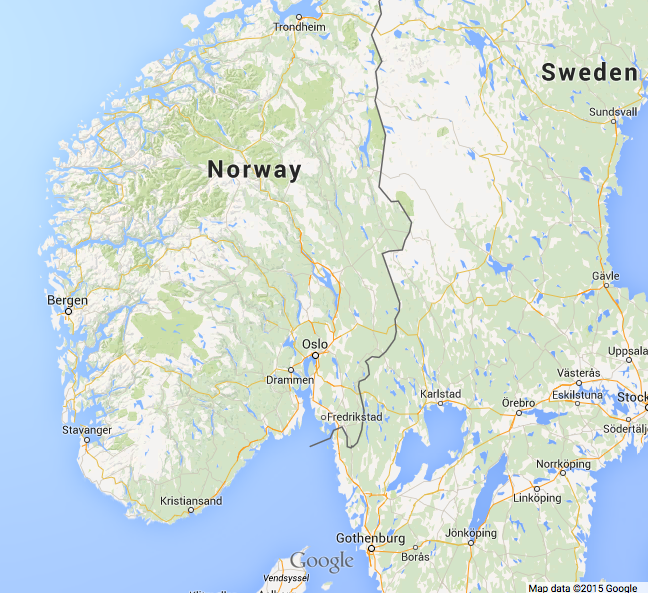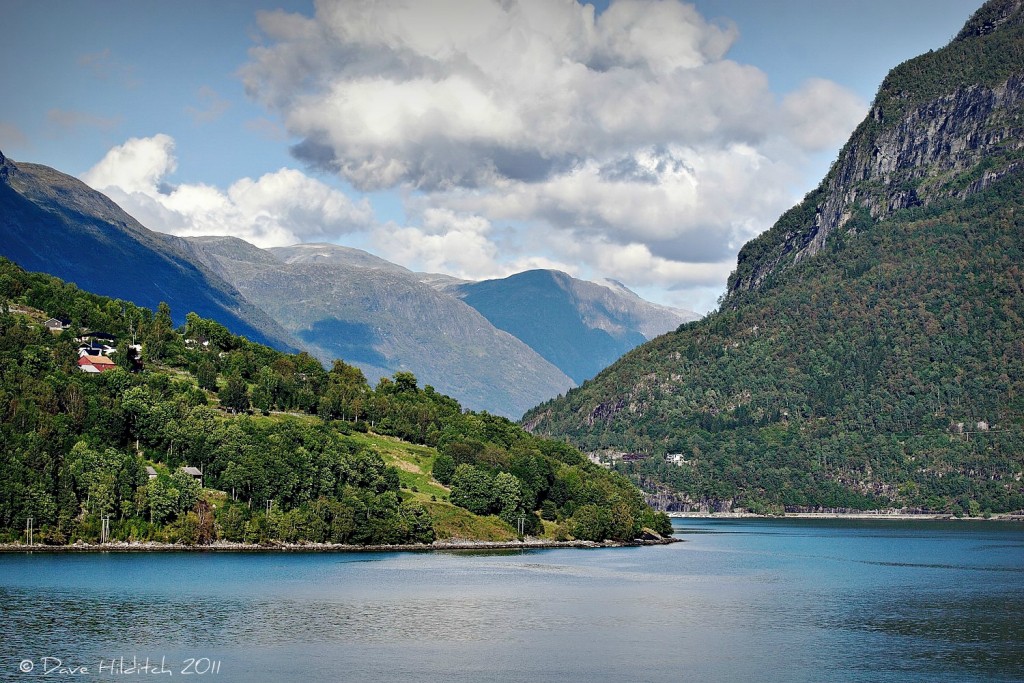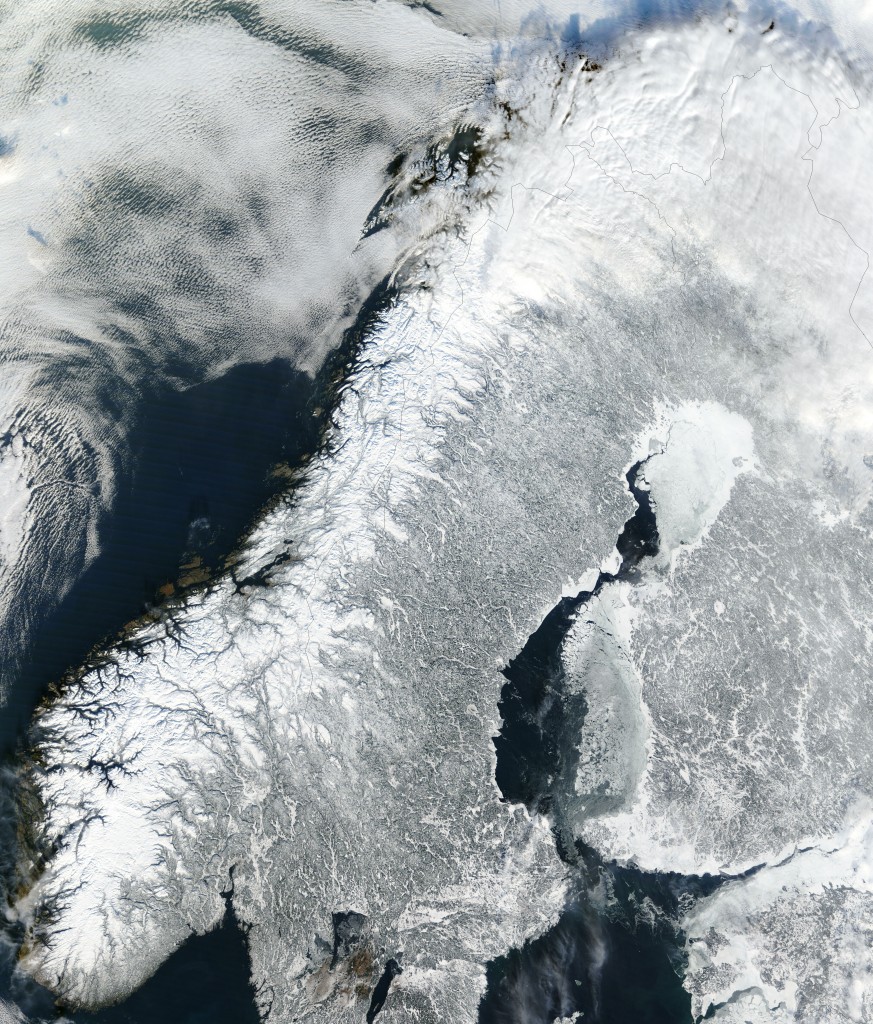Norway has a parliamentary representative democratic constitutional monarchy as its form of government. That’s a mouthful! What that means is this:
Parliamentary: The executive branch is held accountable to the legislature, thus linking the executive and legislative branches, unlike how it is done in the US. In Norway, the Head of State is the King, the Head of Government is the Prime Minister.
Representative Democratic: A group of officials are elected to represent the people, as opposed to direct democracy. Both Norway and the US are representative democracies.
Constitutional Monarchy: There is a Royal Family, but what they can do is restricted by the Constitution. This is as opposed to an Absolute Monarchy, in which the Royals have complete control over the affairs of the state. Furthermore, Norway’s Monarchy is a Ceremonial Monarchy as opposed to an Executive Monarchy. The Royal family does not exercise their constitutional powers, they delegate almost all of them to the elected government.
Unlike the US, Norway has several major and influential parties that make up The Parliament (known as the Storting). Once the legislature has been voted on, they attempt to form a government. This entails selection of the Prime Minister and cabinet members. The Prime Minister is technically chosen by the Monarch, but in practice, the Monarch always chooses the leader of the majority party. The Prime Minister then selects the cabinet. If the party doesn’t have a clear majority, then they will often times form a coalition government with however many other parties needed to form a clear majority. Then, some cabinet positions will be filled with members from the other parties. This government is the executive branch, but it answers to the rest of the legislative branch. The judicial branch is appointed by the executive branch, though once appointed, are no longer accountable to the legislature, besides possible impeachment.
Norway’s current government, elected in 2013, currently has 8 different political parties represented in it.
The current government is headed by a coalition of the Conservative Party, Progress Party, Christian Democratic Party, and Liberal Party, called the Centre-right coalition.
The current parties with any representation in Parliament are: Conservative Party (Høyre), Progress Party (Fremskrittspartiet [FrP]), Christian Democratic Party (Kristelig Folkeparti [KrF]), Liberal Party (Venstre), Labour Party (Arbeiderpartiet [Ap]), Centre Party (Senterpartiet [Sp]), Socialist Left Party (Sosialistisk Venstreparti [SV]), Green Party (Miljøpartiet De Grønne [MDG]).
Conservative Party (Høyre)
The Conservative Party (Norwegian: Høyre, literally “right”) got into office, defeating 8 years of Labour Party rule. They were elected based on promises of tax cuts, better services and stricter rules on immigration. The party is committed to fiscal free market policies, including tax cuts and relatively little government involvement in the economy. It does, however, support the continued existence of the Norwegian welfare state. The Conservative Party’s social policies are quite liberal: the party voted in 2008 for a law that recognised same-sex marriage and gay adoption rights. It is also in favour of Norwegian membership in the European Union, although stating that this is not a priority, nor realistic in the short term, as Norwegians have rejected membership in two referendums and opinion polls show that two-thirds of Norwegians oppose membership.
Progress Party (Fremskrittspartiet [FrP])
The Progress Party (Norwegian: Fremskrittspartiet, literally “the advancers party”) is Norway’s third largest party. Founded in 1973 as an anti-tax protest movement, the party values individual freedom strongly, supports market liberalism, and advocates downsizing bureaucracy and the public sector, while also proposing increased spending of Norway’s public Oil Fund to invest in infrastructure. The party also seek a more restrictive immigration policy and tougher integration and law and order measures. In foreign policy it is strongly Atlanticist, and pro-globalization. The party opposed the legalization of same-sex marriage in 2008, however, during the national convention in May 2013, the party voted in favor of both same-sex marriage and same-sex adoption.
Christian Democratic Party (Kristelig Folkeparti [KrF])
The Christian Democratic Party (Norwegian: Kristelig Folkeparti, literally “Christian People’s Party”) is an overall Christian based party. It is considered an overall centrist party, combining socially conservative views with more left-leaning economic positions. In social policy the Christian Democratic Party generally have conservative opinions. On life issues, the party opposes euthanasia, and abortion, though it can support abortion in cases of rape or when the mother’s life is at risk. On gay rights issues, the party supports possibilities for gay couples to live together, but opposes gay marriage and gay adoption rights. The party maintains neutrality on the issue of gay clergy, calling that an issue for the church. The main rival in the competition for conservative Christian votes has been the Progress Party.
Liberal Party (Venstre)
The Liberal Party (Norwegian: Venstre, literally “left”) is the oldest party in Norway. In the last few election campaigns, Venstre’s main focus has been on environmental issues, education, small-business and social issues. Venstre advocates higher taxes on activities that damage the environment. Some other issues Venstre advocate are increased labour immigration, abolition of the Church of Norway as the State church, abolishing the wealth and inheritance taxes, and more power to local authorities. Venstre is pro LGBT.
Labour Party (Arbeiderpartiet [Ap])
The Labour Party (Norwegian: Arbeiderpartiet, literally “the worker party”) is the largest single party in the current government. Founded in 1887, the party steadily increased in support until it became the largest party in Norway in 1927, a position it has held ever since. From 1945 to 1961, the party had an absolute majority in the Norwegian parliament, the only time this has ever happened in Norwegian history. (Meaning they had a clear majority, and didn’t have to form a coalition government.) Labour focuses on making a society with a relatively small gap between rich and poor, a comprehensive welfare system and low unemployment. Labour is pro LGBT.
Centre Party (Senterpartiet [Sp])
The Centre Party (Norwegian: Senterpartiet, literally “the center party”) was founded in 1920. The party is most known for their support of high toll tariffs on foreign cheese and meat, called “toll protection”, and their proposal to shoot all wolves in Norway. The Centre Party wants a mixed economy, where private property and private initiatives coexists with public regulations and service. When the environmentally friendliness grew more important in Norwegian politics in the late sixties/early seventies, the Centre Part tended towards supporting environmentally friendly laws. he party was central in the campaigns against Norwegian membership in the European Union. The Centre Party does not appear to have anything regarding LGBT people enshrined in its policies, and leaves votes on these matters up to the individual representatives.
Socialist Left Party (Sosialistisk Venstreparti [SV])
The Socialist Left Party (Norwegian: Sosialistisk Venstreparti, literally “socialist left party”) is a left-wing party. The party also increasingly profiles itself as a supporter of feminism and environmentalism. The party favours a welfare state and taxation of the wealthy, and is generally a socialist party. Education has been one of main campaign issues since 1997. The party wants to reduce the number of private schools, claiming they are of no use. The party is open to more immigration, believing Norway will evolve into a more multicultural society. The party believes the only way to create social equality is to create ethnic equality in Norway. The party is pro LGBT.
Green Party (Miljøpartiet De Grønne [MDG])
The Green Party (Norwegian: Miljøpartiet De Grønne, literally “environment party the greens”) is the smallest party in Parliament, with only 1 member. It is a center left party, however, in any issue regarding the environment, they are strongly pro environment, and distance themselves from both left and right wing parties when they support anti-environment policies. Besides issues relating to the environment, they follow a center left ideology. The party is pro LGBT.
Other Parties
There are 13 other parties that got some amount of votes in the 2013 election, but didn’t actually get any representatives elected. They are as follows, in order of vote amounts:
Overall, the politics of Norway are significantly different than the politics of the US, and being politically active in Norway requires more research, given the large number of parties, but it also provides more choice in finding the party that most closely aligns with more of your principals. 
Most of the information in this post was compiled from various Wikipedia articles, and independent research from the various parties’ websites.
![]()










